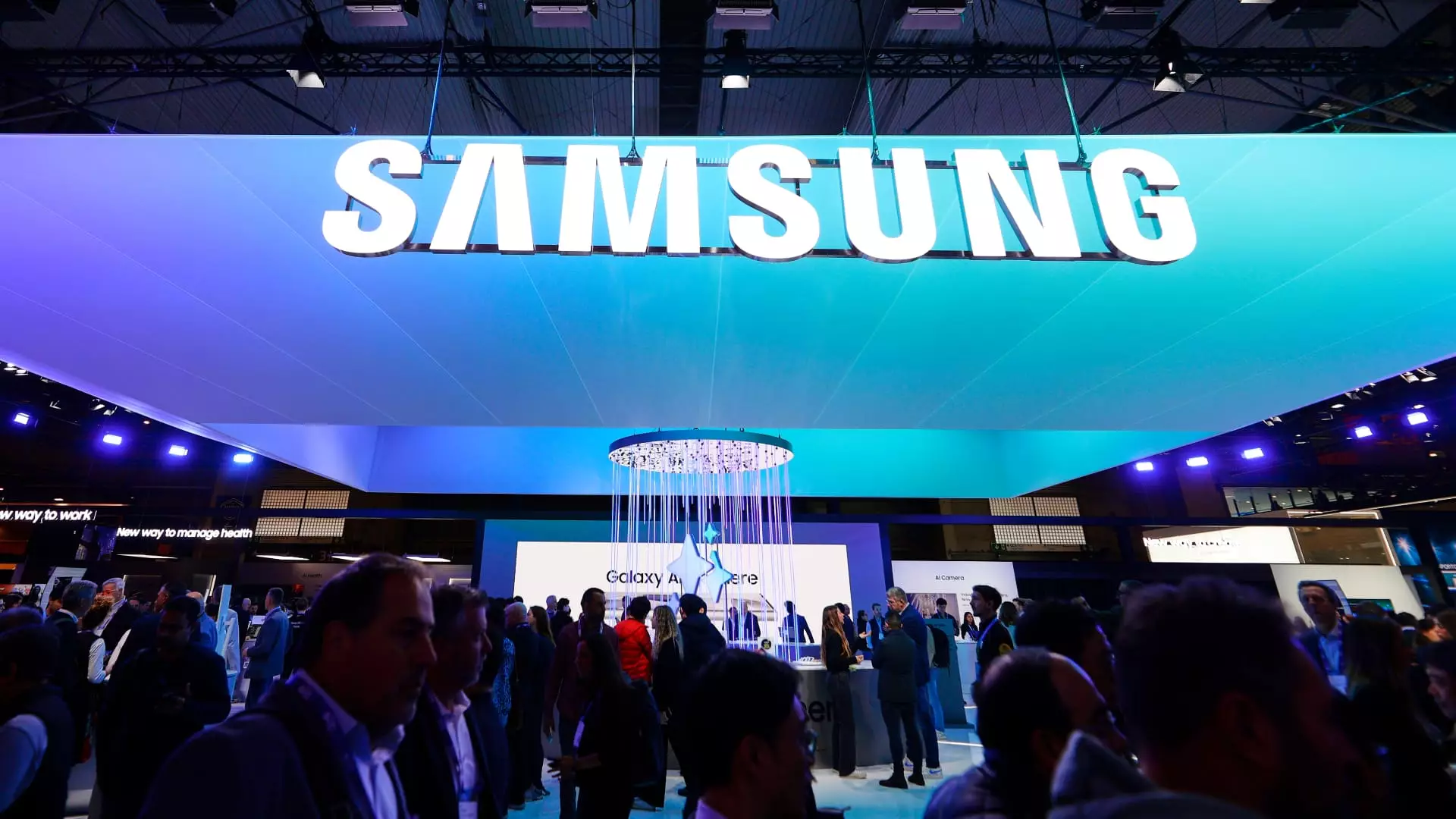Samsung Electronics, the prominent South Korean technology leader, has recently released a profit forecast that has raised eyebrows within the financial community. According to company guidance, Samsung anticipates an operating profit of approximately 9.10 trillion won (about $6.4 billion) for the third quarter ending in September. This is undoubtedly a significant increase from the previous year’s figure of 2.43 trillion won, showing a remarkable growth of 274%. However, despite this seemingly favorable trend, the predicted numbers fall short of estimates provided by analysts from LSEG, who had anticipated an operating profit of around 11.456 trillion won ($7.7 billion).
The discrepancy between Samsung’s projections and analyst expectations is particularly concerning, especially when considering the company’s stature as the world’s leading memory chip manufacturer. In the highly competitive technology sector, consistency and meeting market forecasts are crucial for maintaining investor confidence. Following the release of this disappointing forecast, Samsung’s shares fell by 0.98%, indicating a lack of confidence among investors regarding the company’s direction.
The anticipated revenue for the quarter is also notable, projected to reach 81.96 trillion won ($61 billion). However, the reaction from the market suggests that stakeholders are already wary of the underlying issues that could dampen future performance. Analyst Daniel Yoo characterized the figures as “very disappointing,” highlighting a concerning trend for both Samsung and the broader memory chip market.
Several key factors, as outlined by Samsung’s leadership, could be contributing to the company’s declining performance. One significant element is the adjustment of inventory by mobile customers that has introduced short-term challenges for memory sales. Additionally, the increased supply of legacy products from Chinese competitors poses a further threat that Samsung must navigate delicately. As the dominant player in the memory chip industry, the company’s vulnerability to such market fluctuations raises questions about its competitive edge.
Moreover, delays in shipments of high-bandwidth memory (HBM3E) chips to major clients highlight a potential struggle in meeting consumer demands. Samsung’s reliance on traditional DRAM chips for PC and smartphone production amplifies these risks, especially as global demand for such products remains stagnant.
Looking ahead, analysts contend that Samsung must adopt a more flexible approach to memory supply management. The rapidly changing dynamics of the technology market necessitate responsiveness to evolving consumer demands rather than sticking rigidly to old strategies. Macquarie Equity Research points out that the diminishing demand for conventional DRAM could put Samsung at an even greater disadvantage compared to smaller rivals.
In light of these developments, Samsung has reportedly initiated staff reductions, aiming to cut 30% from certain divisions, a move indicative of the company’s strategic recalibration amidst tough market conditions. This approach pivots toward an adaptation that may better position Samsung against competitors, provided they execute it efficiently.
As Samsung prepares to release detailed third-quarter results later this month, all eyes will be on how the company responds to its ongoing challenges and whether it can regain its standing within the competitive landscape of the tech sector. The future holds uncertainties, but the company’s actions in the coming weeks will be critical in determining its trajectory.

